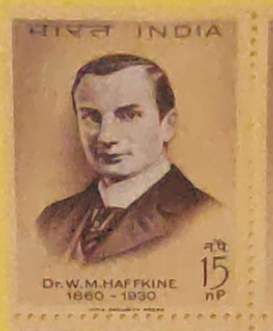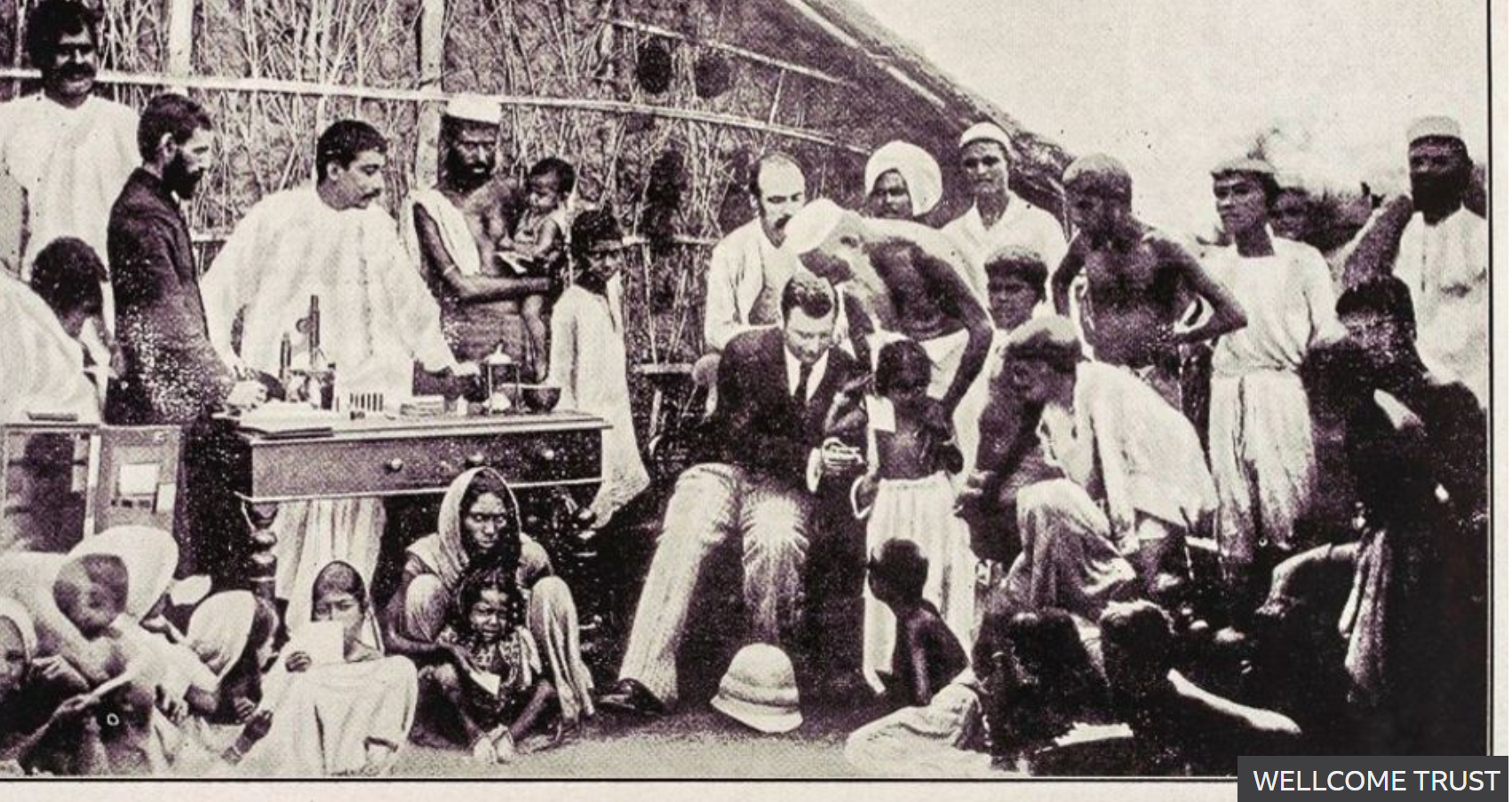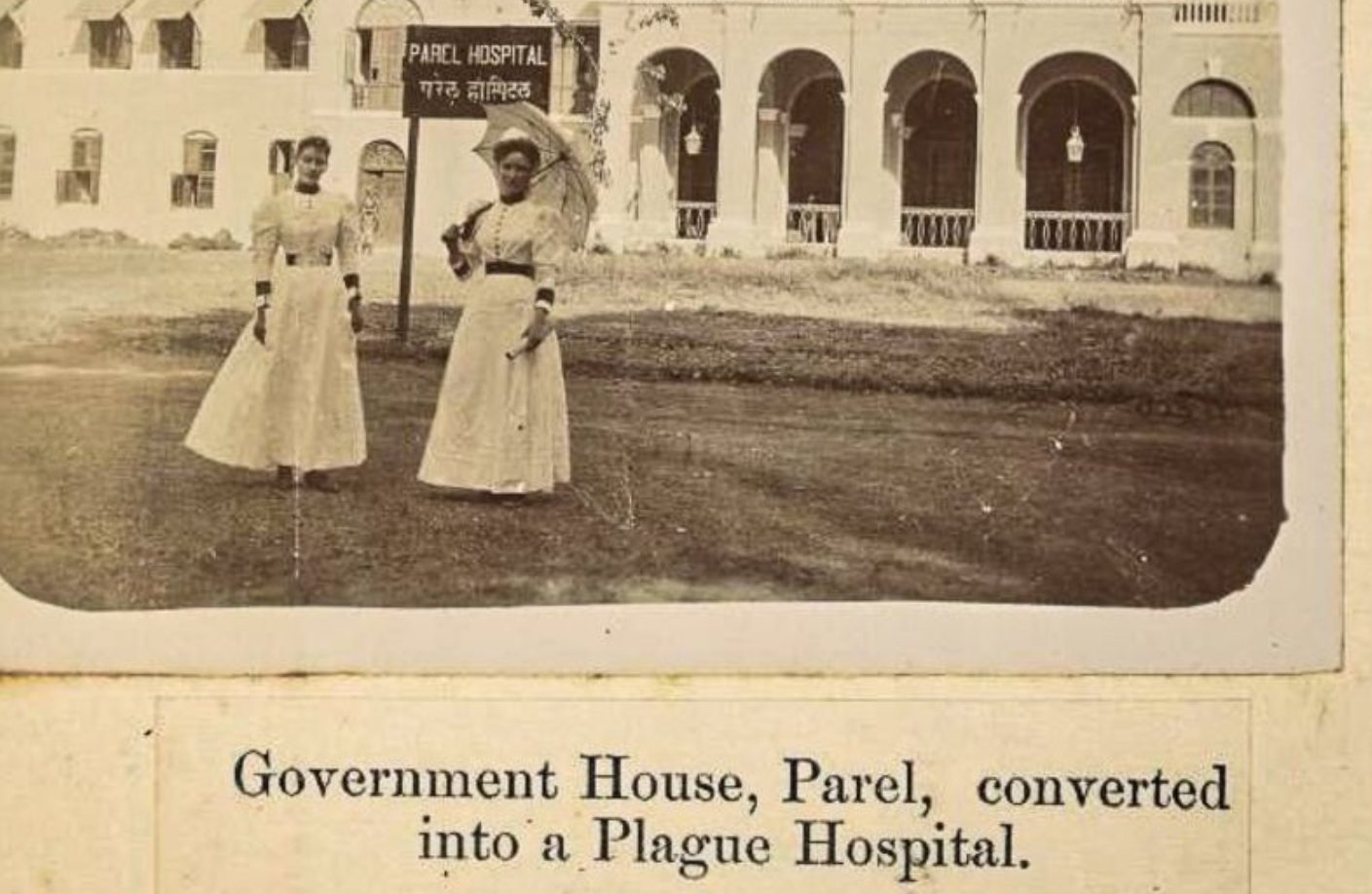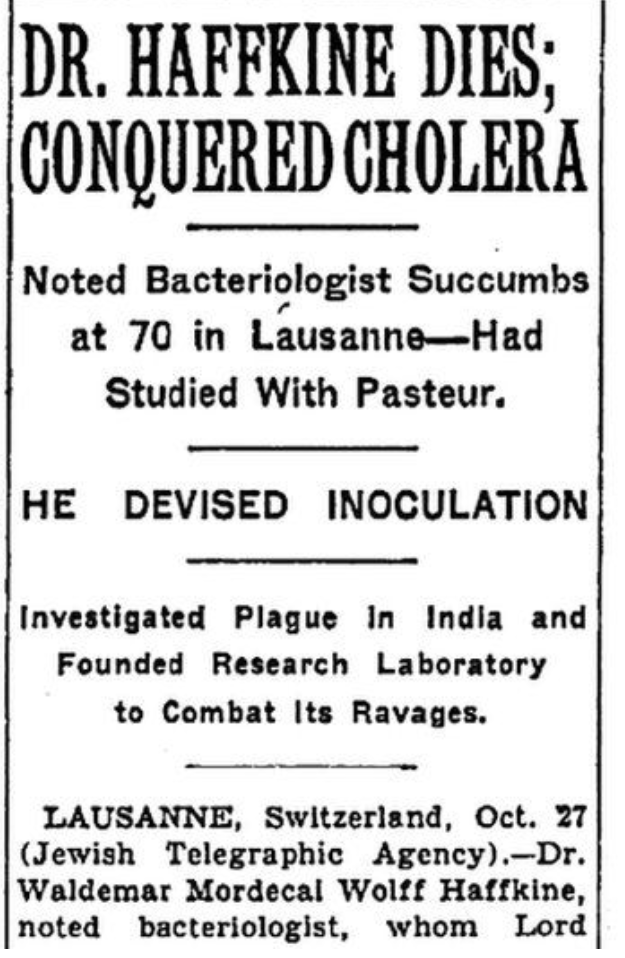
Origin of vaccine from the black hole of Calcutta by “the saviour of mankind”





Zoologist and a vaccine pioneer Waldemar Mordecai Haffkine, a Russian Jew who had trained in Odessa and developed his skills in Paris, in search of cholera at a time when the world of international bacteriology was factional and prone to suspicion. He created the world’s first vaccines for cholera and plague, but an accidental mass poisoning derailed his life.
In 1893, Lord Frederick Dufferin, then the British ambassador in Paris and a former Viceroy of India, heard of Haffkine’s world of vaccinology and suggested he go to Bengal.
When in 1894 he went to Calcutta in the State of Bengal struggled with the practical side of testing his vaccine. He inoculated 23, 000 people in northern India, according to his own records.
He was also invited by the owners of tea plantations in Assan to vaccinate their workers. Haffkine conducted large scale trials there on thousands of plantation coolies.
In March 1894 he was invited to Calcutta by the medical officer there to help identify cholera bacilli in a water tank in one of the city’s isolated villages consisting of mud huts clustered around ponds and inhabited by the city’s poor. The families living in these villages drank collectively from the shared water sources, making them vulnerable to periodic outbreaks of Cholera.
At the end of March that year two persons died of cholera in Kattal Bagan village which prompted Haffkine to inoculate 116 of 200 inhabitants.
Haffkine’s solution was to work with a team of Indian doctors and assistants rather than the British – Dr Choudry, Dr Ghose, Dr Chatterjee and Dr Dutt among others. Haffkine publicly injected himself with the vaccine to prove he thought his preparation was safe.
Haffkine’s was the first person who brought laboratory medicine into a tropical country like India and his work in Calcutta slums placed him among the privileged group of scientists who pioneered a profound and global shift in the way disease was understood and treated.
In 1888, Haffkine left his home country and found his way first to a teaching job in Geneva and then to Paris where he took a position as an assistant librarian at the Louis Pasteur Institute – then the world’s leading centre of bacteriology research. In his free time from the library, Haffkine experimented in the bacteriology lab and sometimes played the violin.
Haffkine discovered that by passing cholera bacilli through the peritoneal cavity of Guinea pigs- 39 passes in total- he could produce a strengthened or exalted cholera culture. An injection of the attenuated bacteria followed later by an injection of the exalted bacteria appeared to immunise guinea pigs against a lethal attack of the disease.
On 18th July 1892, Haffkine risked his life by injecting himself with attenuated cholera, although he suffered a fever for several days but recovered fully and went on to inoculate three Russian friends and then several other volunteers.
The world’s third plague pandemic began in Yunnan, China in 1894, which spread down to British Hong Kong and from there by merchant shi to the coastal metropolis of Bombay in what was then British India, where the first case was discovered in September 1896 at a grain merchant’s quarters at the city’s docks.
British government although underplayed the severity of the outbreak, keen to keep a key port city open for business, but the disease spread like wildfire through Bombay’s congested slums, its mortality rate nearly twice that of cholera as the governor turned to Haffkine for help where he was tasked with coming up with the world’s first plague vaccine from scratch.
In December, Haffkine, inoculated rabbits against an attack of plague, and by January 1897, he was ready once again to test a fresh vaccine for a deadly disease on human. On 10 January 1897, Haffkine injected himself with 10cc of his preparation – when he experienced a severe fever but recovered after several days.
At the end of the month, a plague outbreak occurred at Bombay’s Byculla House of Correction, a jail housing hundreds of inmates where he inoculated 147 prisoners and left 172 untreated. There were 12 cases and six deaths among the untreated and just two cases and no deaths among the treated.
Haffkine was given a government-owned bungalow, and then on to a large lodge owned by the spiritual leader the Aga Khan, who also volunteered himself and thousands of members of his Khoja Mussulman community for inoculation. Within a year thousands of people had been inoculated using Haffkine’s vaccine, saving several lives. He was knighted by Queen Victoria and in December 1901, he was appointed director-in-chief of the Plague Research Laboratory at Government House in Parel, Bombay with a staff of 53.
In March 1902, 19 people died from tetanus after being inoculated with Haffkine’s vaccine in the village of Mulkowel in Punjab although 88 others inoculated that day were fine. All the evidence appeared to point to fatal contamination of bottle 53N prepared 41 days earlier at the Parel Lab.
An Indian government commission was tasked with investigating, and it discovered that Haffkine had changed the procedure for sterilising the plague vaccine, using heat instead of carbolic acid because it sped up production. The heat method has been safely in use at the Pasteur Institute for two years. Haffkine was fired as director of the plague lab and placed on leave from the Indian Civil Service. Disgraced Haffkine left India for London. Dr Barbara Hawgood, a lecturer who published an academic paper on Haffkine’s career said “ There was a lot of bias in those days, a lot of prejudice. He wasn’t medical, so he wasn’t one of them. There was a lot of arrogance about that.”
In 1904, two years after Haffkine was suspended, the plague reached its peak in India killing 1, 143, 993 people that year, although Haffkine’s vaccine was the main line of defence.
Four years after the Mulkowal incident in 1906, the Indian government finally published its full enquiry finding Haffkine guilty, which was responded by WJ Simpson, a professor at King’s College, London, and wrote a letter to the British Medical Journal arguing that the evidence pointed to accidental contamination of bottle 53N at the inoculation site in Punjab. First, there was no smell recorded from the bottle when it was opened, whereas a developed culture of tetanus would have produced a foul and distinct odour, second when the bottle was examined 15 days later there was only a poor culture of tetanus there. If the bottle had been contaminated in Bombay the commission would have found in the dregs of the bottle a rich instead of poor culture, Third tetanus developed slowly in the 19 people who died, over seven to ten days, indicating a weak infection beginning on the day of inoculation. With a well-developed culture already in the bottle they would have been attacked by tetanus of the fulminating variety, he wrote.
Most importantly, the documents revealed that the assistant who opened bottle 53N dropped his forceps on the ground and failed to sterilise them properly before reusing them to remove the bottle’s cork stopper. Simpson concluded that Haffkine had been subjected to a grave injustice.
Of the 30 papers Haffkine produced in his lifetime, only one was published between 1907 and 1914. He returned briefly to study of cholera and became interested in developing a new devitalized vaccine a method that would later become widely used. In 1914, aged 55, Haffkine retired from the Indian Civil Service and left the country. The Mulkowal disaster and the following guilty verdict had done him lasting damage.
Haffkine returned to France and devoted his retired life to his faith, becoming increasingly orthodox and establishing a foundation to promote Jewish education in Eastern Europe. He never married and lived his final years alone in Lausanne, Switzerland.
Haffkine died in Lausanne in 1930, aged 70. A short obituary notice circulated by the Jewish Telegraphic Agency noted that his plague vaccine had been adopted throughout India and his lab and issued many thousands of doses to various tropical countries. The notice also quotes Lord Lister, the great British Bacteriologist and Pioneer of antiseptic surgery, who called Haffkine simply “ the saviour of mankind”.
The two-room where Haffkine first developed his plague vaccine is now part of the Grant Medical College and Sir JJ Group of Hospitals in Mumbai and more than hundred years after Haffkine’s breakthrough there, the hospital is playing a role in India’s fight against Coronavirus pandemic.
